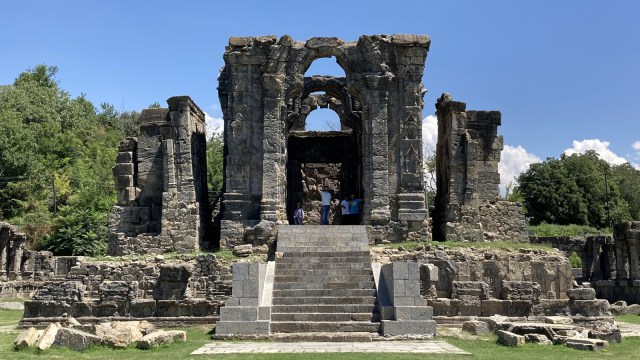
A parliamentary committee has suggested that the government should consider allowing religious ceremonies at monuments protected by the Archaeological Survey of India (ASI) with religious significance. The report on “Issues relating to Untraceable Monuments and Protection of Monuments in India” was presented in both Houses on Friday.
If this recommendation is implemented, it will provide a significant opportunity as many protected monuments, including temples, dargahs, churches, and other religious sites, are in need of repair. Currently, the ASI only allows worship and rituals at monuments where such traditions were already in place when the agency took custody of them.
The committee, led by and consisting of over a dozen MPs from various political parties, noted that many historical monuments in India hold great religious importance for a large number of people. Allowing pujas, worship, and certain religious activities at these monuments can fulfill the legitimate aspirations of the people.
The committee recommended that the ASI should explore the possibility of permitting religious activities at Centrally Protected Monuments of religious significance, as long as it does not negatively impact the conservation and preservation of the monuments.
In response, the Ministry of Culture acknowledged the recommendation and promised to assess its feasibility. However, they emphasized that the revival of worship is not allowed at sites where it was not practiced at the time of protection by the ASI or has been abandoned for a long time.
Last year, the ASI expressed concern to the local administration after prayers were held at the ruins of the eighth-century Martand Sun Temple in Jammu and Kashmir’s Anantnag. According to ASI rules, prayers are only allowed at protected sites if they were functioning places of worship at the time the ASI took charge of them.
Out of the 3,693 centrally protected monuments and archaeological sites maintained by the ASI, around a fourth have places of worship, while the rest are considered non-living monuments. The ASI officials stated that prayers should only be allowed at sites with a history of worship, even if they are technically non-living monuments.
The committee also criticized the Ministry for only providing action-taken notes on 21 out of 35 recommendations regarding untraceable monuments. They emphasized the importance of responding to critical issues promptly and conducting surveys to identify monuments in a timely manner.
It is worth noting that prayers are permitted at some protected sites if they were places of worship when taken over by the ASI. Examples of living ASI monuments where prayers are held include the Taj Mahal, mosques in Kannauj, Roman Catholic Church in Meerut, Nila Mosque in Delhi’s Hauz Khas Village, and Buddhist monasteries in Ladakh. Unauthorized worship is also observed at some ASI monuments, such as Lal Gumbad, Sultan Ghari’s tomb, and Ferozeshah Kotla in Delhi.







